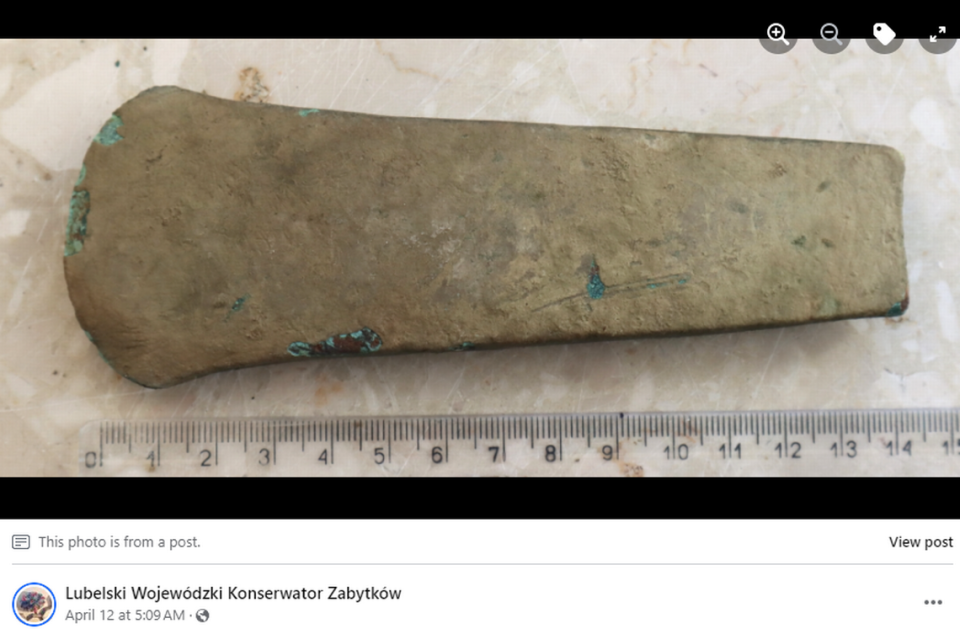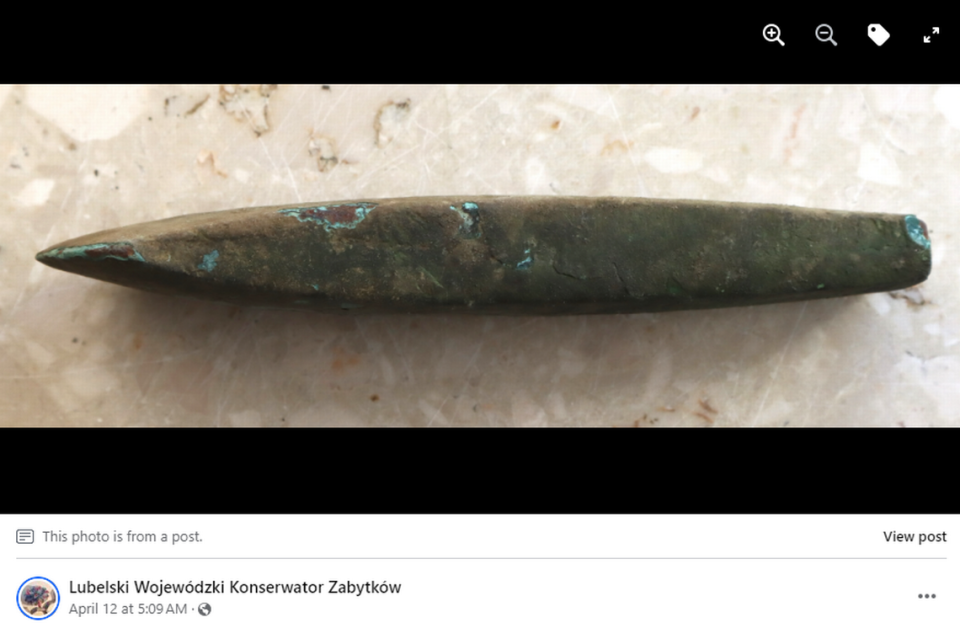Metal detectorist finds 6,000-year-old artifact in forest. It may have been holy gift
- Oops!Something went wrong.Please try again later.
A metal detectorist scanning a forest in Poland heard his machine discovering something in the soil — then made a monumental find.
Romuald Ościak, a member of the Historical and Ethnographic Association of Lublin Land Lovers, made the ancient find outside the town of Widniówka, according to an April 15 news release from the Ministerstwo Nauki i Szkolnictwa Wyższego, the Ministry of Science and Higher Education in Poland.
Ościak already had a reputation as a successful artifact hunter.
He previously discovered a sickle from the Bronze Age, a medieval battle ax and coins from the reign of King John II Casimir Vasa, the ministry said.
This time, his discovery was even more special.
Under the undergrowth of the forest, Ościak discovered the head of a copper battle ax.

Uncover more archaeological finds
What are we learning about the past? Here are three of our most eye-catching archaeology stories from the past week.
→ Farmer loses plow part in Polish field — then finds historic artifact during search
→Divers remove ancient Roman cargo from shipwreck — and find unique carvings. See them
→ Metal detectorists find ancient portrait in Danish field. See the 'legend' it depicts
Just under 6 inches long, the ax has a fan-shaped cutting edge and a concave rectangular head, weighing about 24 ounces, the ministry said.
It is also 6,000 years old.
Many searchers will go their entire lives without finding something as scientifically and historically valuable, association president Edwin Rozwałka told the ministry.
It is common to find equipment from World War I and II soldiers, Rozwałka said, but finding something several thousand years old is rare.

Archaeologists dated the ax to the early Neolithic period, around the fourth millennia, B.C., according to the ministry.
Researchers from the local monument protection office, Lubelski Wojewódzki Konserwator Zabytków, said the ax would not have been forged in the region, but likely came to the area as an import to the Lublin-Volyn culture from the Carpathian Basin, modern-day western Hungary, or from the Eastern Alps, the region of southern Germany and Austria.
The archaeologists also believe that the ax had a votive element, not used in war, but given as a gift to a deity as a vow, according to the release.
Google Translate was used to translate the news release from Ministerstwo Nauki i Szkolnictwa Wyższego. The news release from the Lubelski Wojewódzki Konserwator Zabytków was translated by Facebook.
‘Princely grave’ filled with luxury artifacts reveals ‘elite’ Roman customs in Poland
Road construction workers discover historic fortress in Poland. Check out the find
Centuries-old shipwreck — with trove of coins — unburied from dry land in Malaysia
Metal detectorists find ancient portrait in Danish field. See the ‘legend’ it depicts

